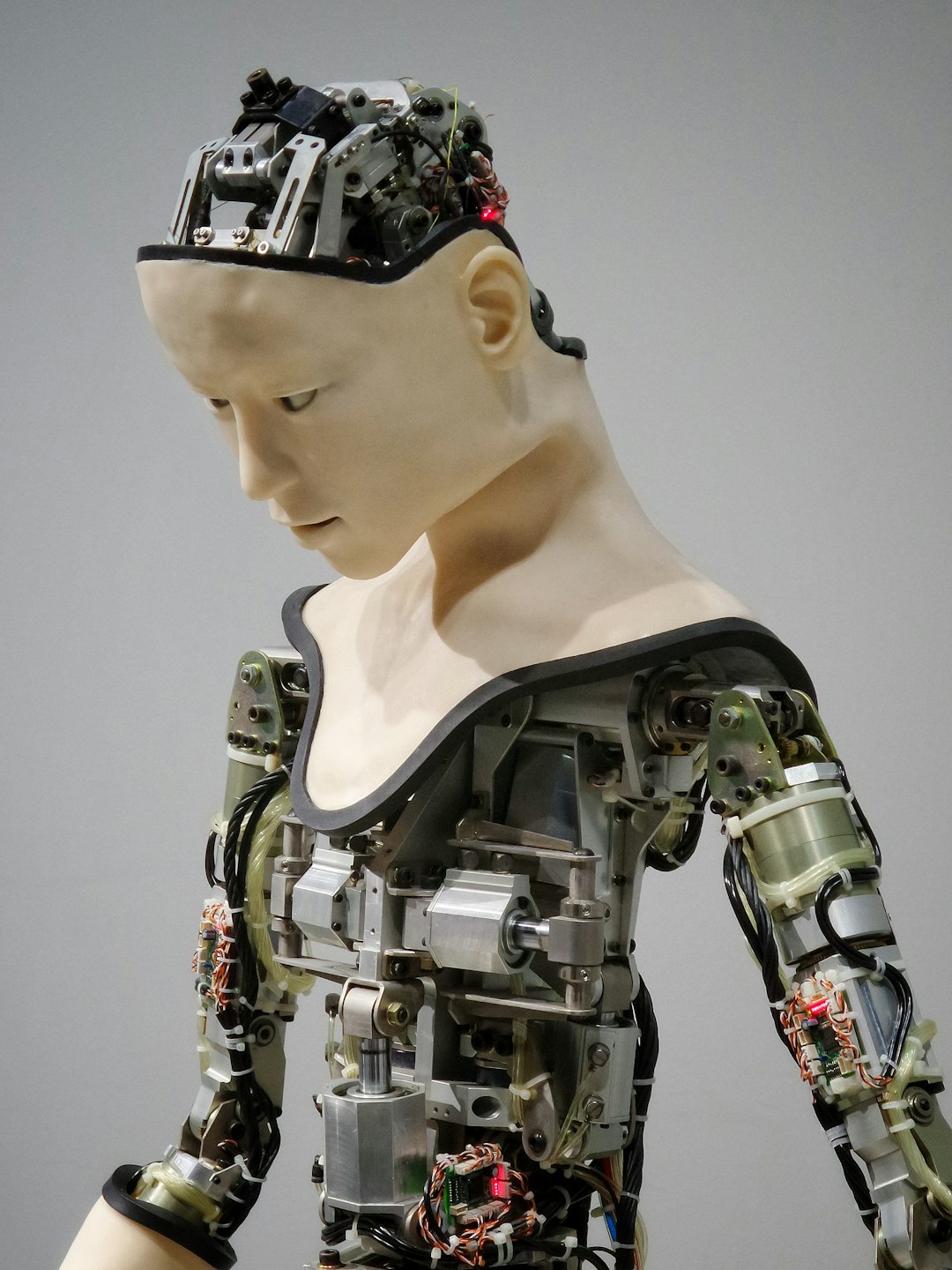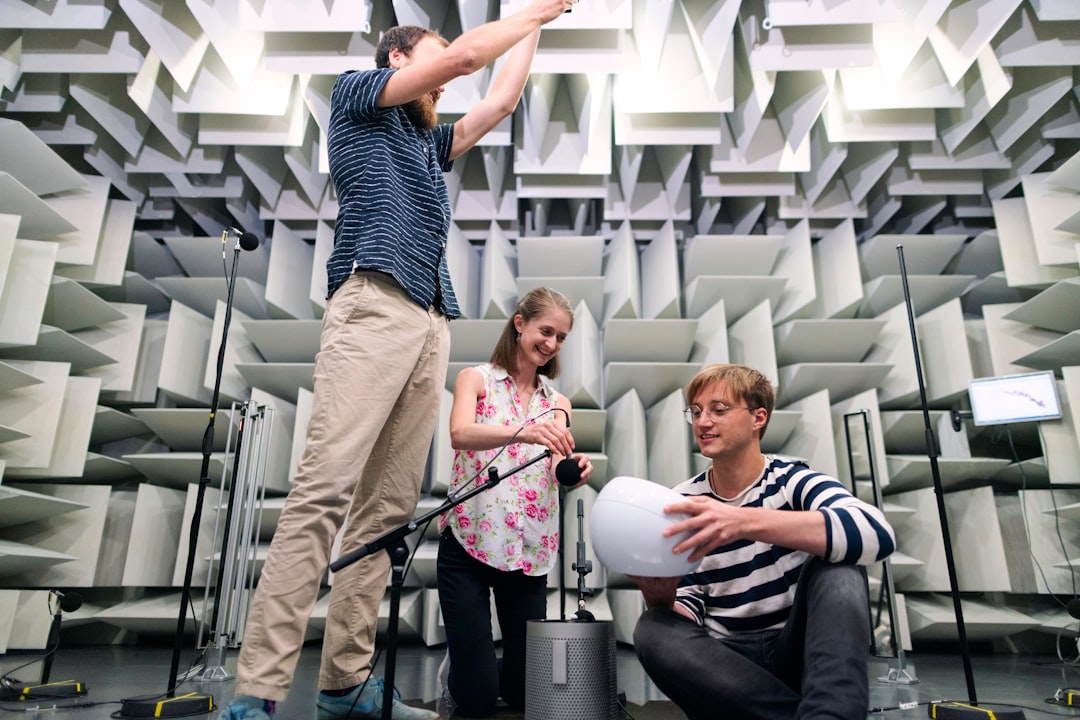Unlock encrypted content
Please enter your SSCE key to initiate on-the-fly decryption.
Decryption key: (Click cancel if you don't have the key)
Copied link to clipboard.
This feature is unavailable for free accounts. Upgrade now and enjoy all Premium benefits.
Go Premium!
This feature is unavailable for free accounts. Upgrade now and enjoy all Premium benefits.
Go Premium!
Please open this page in browser ( Google Chrome or Safari ) to use this feature.
Open In Browser
Cryonics: Freezing Life for the Future
Random related video for this blog.
Copied share link to clipboard.
The process involves cooling the body or brain to temperatures below -196 degrees Celsius using liquid nitrogen. This freezing process is believed to preserve the structure and integrity of cells, allowing for potential future revival when medical advancements catch up.
The Science Behind Cryonics
The science behind cryonics is rooted in the principle that if the brain's structure, including its memories and personality, can be preserved, it may be possible to restore life in the future. To achieve this, cryonics facilities use a specialized method called vitrification, which replaces the body's water with a cryoprotectant solution. This prevents the formation of ice crystals that could damage cells during the freezing process. Once vitrified, the body is placed in a storage container and submerged in liquid nitrogen.The Ethical and Legal Considerations
Cryonics is a topic that raises ethical and legal questions. Critics argue that it is an unproven and speculative practice, lacking scientific evidence to support its claims. They raise concerns about the potential exploitation of vulnerable individuals who may be led to believe in false hopes of future revival. Furthermore, the legal status of cryonics varies across different jurisdictions, with some countries allowing it while others prohibit or restrict it.Space Exploration: Pushing the Boundaries of Human Existence
Space exploration has captivated human imagination for centuries. From the first moon landing to the ongoing missions to Mars, our desire to explore and understand the universe has driven remarkable technological advancements. Beyond the scientific discoveries, space exploration has the potential to shape our future in various ways.Advancing Technology through Space Exploration
Space exploration has been a catalyst for technological innovation. The challenges of surviving and thriving in the harsh conditions of space have pushed scientists and engineers to develop cutting-edge technologies. These advancements have found practical applications on Earth,improving various aspects of our daily lives. For example, the development of lightweight materials for spacecraft has led to stronger and more fuel-efficient vehicles on Earth.
Expanding Our Knowledge of the Universe
Space exploration allows us to expand our understanding of the universe and our place within it. Through missions like the Hubble Space Telescope and the Kepler Space Observatory, we have gained unprecedented insights into distant galaxies, exoplanets, and the origins of the universe. This knowledge not only satisfies our curiosity but also fuels scientific advancements in fields such as astrophysics, cosmology, and planetary science.Data Security in the Age of Digital Transformation
In today's interconnected world, data security is of paramount importance. With the increasing reliance on digital technologies and the internet, protecting sensitive information has become a critical challenge. From personal data to corporate secrets, the potential consequences of data breaches are significant. Therefore, robust data security measures are essential to safeguard against unauthorized access and protect individuals and organizations from harm.The Importance of Data Security
Data security ensures the confidentiality, integrity, and availability of information. Confidentiality ensures that only authorized individuals can access sensitive data, protecting privacy and preventing unauthorized use. Integrity ensures that data remains accurate and unaltered, maintaining its trustworthiness. Availability ensures that data is accessible when needed, preventing loss or disruption of critical services.The Risks of Data Breaches
Data breaches can have severe consequences for individuals and organizations. Personal information, such as social security numbers and financial details, can be used for identity theft or fraud. Corporate data, including trade secrets and customer information, can be exploited by competitors or malicious actors. Additionally, data breaches can damage reputations, result in legal liabilities, and incur financial losses due to regulatory fines and remediation costs.Protecting Data in the Internet of Things (IoT) Era
The Internet of Things (IoT) refers to the network of interconnected devices that communicate and share data. From smart homes to industrial systems, IoT devices have become integral to our daily lives. However, the proliferation of these devices also introduces new security challenges. Securing the IoT ecosystem is essential to protect against potential vulnerabilities and ensure the privacy and integrity of data.Holographic Data Storage: The Future of Digital Archives
Traditional data storage methods, such as hard drives and solid-state drives, have limitations in terms of capacity and longevity. Holographic data storage presents a promising alternative that has the potential to revolutionize how we store and access information. By using light to encode and retrieve data in three-dimensional patterns, holographic storage offers higher storage densities, faster access times, and increased durability.The Science Behind Holographic Data Storage
Holographic data storage relies on the principles of interference and diffraction. A laser beam is split into two parts: the object beam and the reference beam. The object beam carries the data, which is encoded as interference patterns within a photosensitive medium. When the reference beam is later applied to the medium, it reconstructs the original data by recombining with the stored interference patterns.Cyborgs and Androids: Blurring the Boundaries between Humans and Machines
The concept of cyborgs and androids has long been a staple of science fiction, but recent advancements in technology are bringing us closer to a reality where humans and machines can merge. Cyborgs, or cybernetic organisms, are individuals who have integrated mechanical or electronic components into their bodies, enhancing their capabilities. Androids, on the other hand, are humanoid robots that mimic human appearance and behavior.The Rise of Cyborg Technology
Cyborg technology has already made significant strides in the medical field. Prosthetic limbs and cochlear implants are examples of how technology can enhance human capabilities and improve quality of life. As technology continues to advance, we may see further integration of human and machine, such as brain-computer interfaces that allow direct communication between the brain and computers.Exploring the Field of Cybernetics
Cybernetics is the interdisciplinary study of control systems in living organisms and machines. It examines how feedback mechanisms can be used to regulate and optimize complex systems. Cybernetics has applications in fields such as robotics, artificial intelligence, and human-computer interaction. By understanding and harnessing the principles of cybernetics, we can create more efficient and adaptive technologies.FileLu.com: Secure Cloud Storage with Multi-Factor Authentication
FileLu.com is a leading provider of secure cloud storage solutions that prioritize data security and privacy. With FileLu.com, users can store and share their files with confidence, knowing that robust encryption and multi-factor authentication measures are in place to protect their sensitive data.Ensuring Data Security with Multi-Factor Authentication
Multi-factor authentication adds an extra layer of security to user accounts by requiring multiple forms of identification. This can include something the user knows (such as a password), something they have (such as a mobile device), or something they are (such as a fingerprint). By combining these factors, multi-factor authentication significantly reduces the risk of unauthorized access, even if one factor is compromised.Conclusion
As technology continues to advance at an unprecedented rate, the fields of cryonics, space exploration, data security, holographic data storage, cyborgs and androids, and cybernetics present fascinating opportunities and challenges. From the potential revival of frozen bodies to the exploration of distant galaxies, from protecting sensitive data to merging humans and machines, these areas shape our future and open new frontiers for human endeavor. With FileLu.com providing secure cloud storage solutions, individuals and organizations can confidently store and share their files, knowing that their data is protected by robust encryption and multi-factor authentication.Frequently Asked Questions (FAQs) Question: What is cryonics? Answer:
Cryonics is the practice of freezing human bodies or brains at extremely low temperatures with the hope of reviving them in the future. Question: How does multi-factor authentication work? Answer:
Multi-factor authentication requires users to provide multiple forms of identification, such as a password, a mobile device, or a fingerprint, to access their accounts. Question: What is holographic data storage? Answer:
Holographic data storage is a method of storing and retrieving data using light interference patterns in a three-dimensional medium. Question: How can cyborg technology enhance human capabilities? Answer:
Cyborg technology can enhance human capabilities by integrating mechanical or electronic components into the body, such as prosthetic limbs or cochlear implants. Question: How does space exploration contribute to technological advancements? Answer:
Space exploration pushes scientists and engineers to develop innovative technologies to overcome the challenges of surviving in space, which often have practical applications on Earth. Question: How does FileLu.com ensure data security? Answer:
FileLu.com prioritizes data security by using robust encryption and multi-factor authentication measures to protect sensitive information. Question: Can I share large files using FileLu.com? Answer:
Yes, FileLu.com offers large file transfer capabilities, allowing users to send files up to 250 GB in size.
By Amelia Isabella
Email: [email protected]
Related
Seamless File Integration with Third-Party Apps: Enhancing Efficiency and Collaboration...
June 23, 2023
Read More
Reputable Project Management Software: Boosting Efficiency and Collaboration
June 23, 2023
Read More
Efficient File Manager System: Preview All Photos, Docs, Spreadsheets, and...
June 24, 2023
Read More
<h2>Unmanned Aerial Vehicle (UAV) Data Analytics: Revolutionizing Industries</h2>
June 24, 2023
Read More
Nanotechnology: Paving the Way for Futuristic Gadgets and Advanced Storage...
June 24, 2023
Read More
Popular
The Future of Technology: Exploring Biohacking, Space Tourism, and Digital...
November 23, 2025
Read More
Exploring the Benefits of Cloud Storage and Innovative Technologies in...
November 26, 2025
Read More
The Future of Digital Transformation: Exploring Smart Homes, Efficient File...
November 30, 2025
Read More
Latest
The Future of Digital Transformation: Exploring Smart Homes, Efficient File...
November 30, 2025
Read More
Exploring the Benefits of Cloud Storage and Innovative Technologies in...
November 26, 2025
Read More
The Future of Technology: Exploring Biohacking, Space Tourism, and Digital...
November 23, 2025
Read More
The Future of File Sharing: Streamlined Workflows for Photographers and...
November 19, 2025
Read More
Exploring the Intersection of Technology: From Cybersecurity to Augmented Reality...
November 16, 2025
Read More
The Future of File Management: Embracing Edge Computing and Efficient...
November 12, 2025
Read More
The Future of File Sharing: Exploring User-Friendly Solutions and Data...
November 5, 2025
Read More
The Future of Cloud Storage: How FileLu Empowers Creative Professionals...
November 2, 2025
Read More
The Future of Autonomous Technologies: Innovations in Robotics, File Sharing,...
October 29, 2025
Read More
Emerging Technologies Revolutionizing File Management: From Li-Fi to Robust Collaboration...
October 26, 2025
Read More
Emerging Technologies: Exploring the Impact of File Access Auditing, Genetic...
October 19, 2025
Read More
The Future of Data Storage: Exploring Advanced Encryption, Mobile Integration,...
October 5, 2025
Read More
Exploring the Future of Data Management: Security, Efficiency, and Cognitive...
September 28, 2025
Read More
Revolutionizing Data Management: Innovations in Storage, Security, and Sustainable Technology.
September 24, 2025
Read More





















